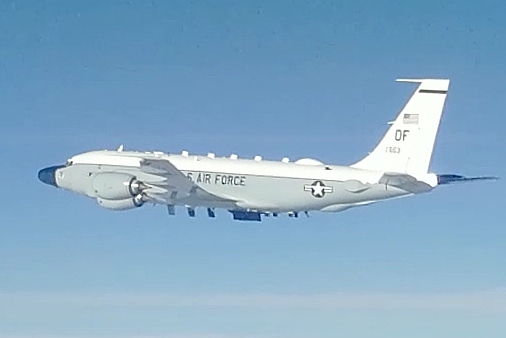
Editor's note: Danil Bochkov is an expert with the Russian International Affairs Council. He graduated cum laude with a master's degree in economics from MGIMO-University under the Ministry of Foreign Affairs of Russia and a master's degree in world economy from the University of International Business and Economics in China. The article reflects the author's opinions and not necessarily the views of CGTN.
"Wishing to contribute to the further development and strengthening of peace, stability and co-operative security…" from Vancouver to Vladivostok – that is the preambular of the Open Skies Treaty (OST) signed in 1992 for the sake of overcoming Cold War suspicion between NATO and post-Soviet Russia and dismaying any fears of preparation for military aggression.
The treaty was designed to allow all party-states to conduct short-term overflights above each other's territories on a quota basis and under formally regulated procedures, including the type of the aircraft and data recording equipment. In 2002, following ratifications by Russia and Belarus, the treaty came into force, opening up a new chapter in Russia-NATO cooperation and promising a brighter future for international security and global arms control mechanisms.
This bright chapter ended on December 18 when Russia, notwithstanding its attempts to save the treaty, finally withdrew from it following the U.S.' departure. The Russian Foreign Ministry stressed that the decision was hard to make. The treaty had contributed a lot to international stability and security. However, following the U.S.' destructive moves, Moscow could not risk its national security and left the accord.
Now following the dismantlement in 2019 on Washington's initiative of the other bedrock arms control mechanism – the Intermediate-Range Nuclear Forces Treaty, the world seems to be back to a period of extreme animosity, the one it strived to get over 30 years ago. Although the treaty is still effective with the remaining parties obliged to its legal provision, its coverage has shrunk by 80 percent with the departure of the U.S. and Russia, practically leading to its futility.
The treaty was not flawless, with Russia and the U.S. occasionally being caught up in mutual blaming over the violations of its provisions. Overall, more than 1,500 flights have been conducted since the treaty took effect, 449 of which were carried out above Russia's territory alone being the largest amount of overflights executed above own territory by any of the other states.

In this handout video grab released by Russian Defense Ministry, a U.S. Air Force Boeing RC-135 reconnaissance aircraft which approached the Russian border over the Black Sea is later intercepted by Russian Su-35 fighter jet over Pacific Ocean, June 10, 2021. /CFP
In this handout video grab released by Russian Defense Ministry, a U.S. Air Force Boeing RC-135 reconnaissance aircraft which approached the Russian border over the Black Sea is later intercepted by Russian Su-35 fighter jet over Pacific Ocean, June 10, 2021. /CFP
Despite this fact, Russia was a regular target of U.S. criticism over infringing on its obligations under the treaty by hampering overflights above the particular territories. Washington was also preoccupied with the growing sophistication of Russian sensor equipment and surreptitious intelligence gathering during transit flights over the territories of the U.S. military. Moscow also laid down its claims accusing the U.S. of limiting the observation above the Aleutian Islands and reducing the range of flights over Alaska and the Hawaiian Islands.
After the U.S. formal withdrawal in November 2021, several more ambiguities emerged, such as the observational flights by Russia over the military facilities of the U.S. dislocated on the territories of its NATO allies that stayed within the OST legal framework. Moscow also severely slammed Washington for requesting the reconnaissance data of the Russian territory from its NATO allies. Even though the U.S. was persistent in ditching the treaty, notwithstanding its European allies' assurances of its importance for transparency and monitoring of Russian military activities, Moscow tried to keep it alive.
Russia officially initiated its withdrawal in May when the bill was presented by President Putin to the Russian parliament and signed into law a month later. Between the U.S. and Russian withdrawals, there were six months of multilateral attempts by both Moscow and American allies to mend the deal, but all in vain. Though Joe Biden, while running for the presidency, criticized Donald Trump for "shortsighted policy," he later conceded by stressing that the U.S. would not re-join the treaty. The decision made the last hope to revive the treaty on the eve of the Putin-Biden summit on June 16 gone.
The ongoing acrimony between Russia and the U.S. with its NATO allies preparing for Moscow's alleged invasion of Ukraine in early January does nothing more than bring already frayed ties to record lows and threaten the region – if not the whole world – with a new military confrontation. In such a situation, any channel of communication is extremely valued since it could reduce the level of mutual suspicion. Arms control mechanisms should not become the victims of degrading bilateral relations because if they are, geostrategic stability inspired by them would give way to a Cold War-era brinkmanship.
(If you want to contribute and have specific expertise, please contact us at opinions@cgtn.com.)

